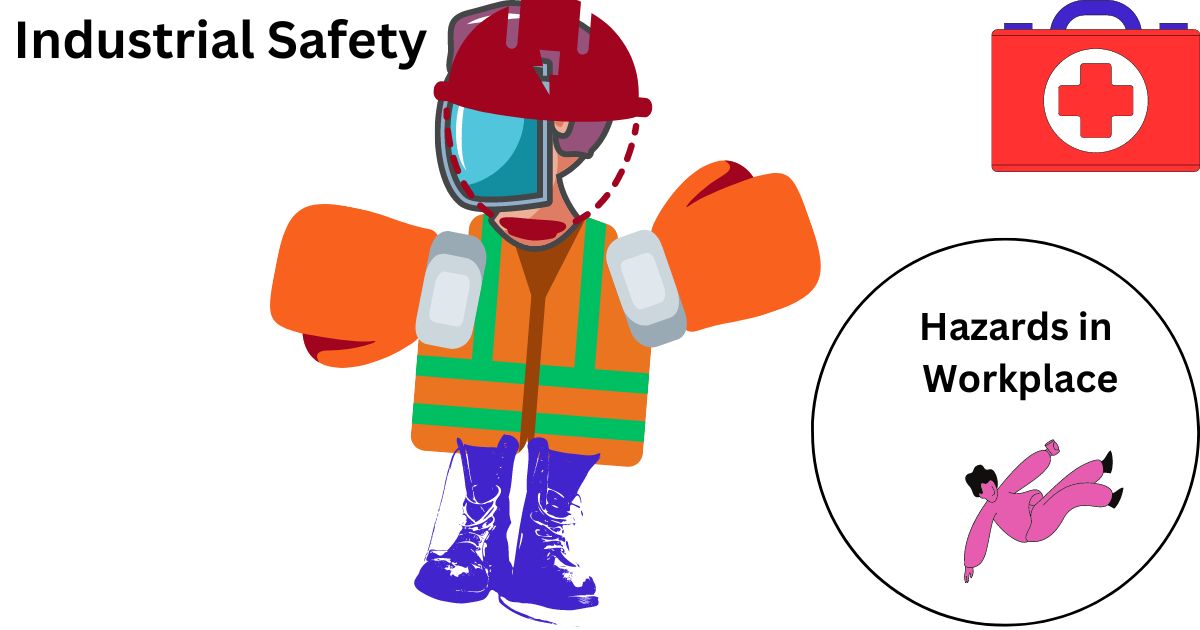
The possibility of safety increases, productivity rises, and the general wellbeing of the workers is protected by incorporating quality culture into the organization. Workplaces may have a variety of equipment, tools, and chemicals, making it challenging to foresee every potential risk. Strong safety precautions must be in place since unexpected hazards such as ergonomic hazards, toxic chemical spills, or electrical hazards might happen at any time. However, regular risk assessments, thorough training, and promoting a safety-conscious culture can all aid in reducing such risks. Employees must be protected from exposure to hazardous material and work related injuries. OSHA have published mandatory occupational safety and health requirements applicable to workplaces in the U.S. This post explain Industrial safety and Ergonomic hazards in Workplace.
What are some examples of workplace hazards?
Safety related hazards: electrical hazards, Machinery related hazards, working from height (scaffolding, roofs etc.)
Chemical hazards: Due to toxic chemicals (solid, liquid, gaseous) present in the workplace.
Biological hazards: when exposed to bacteria and viruses, insect bites, fungi, animals etc.
Physical hazards: Falling from a height, exposure to heavy noise, sunlight, U.V rays, radiation etc.
Organization work culture hazards: stress and harassment in work.
Ergonomic hazards: Chairs and equipment without ergonomic design, Incorrect lifting of weights can lead to problems such as musculoskeletal disorders, repetitive motion injuries.
PPE full form
Uses of Personal Protective Equipment (PPE)
PPE is used extensively in healthcare establishments, especially during disease outbreaks or pandemics, to safeguard healthcare workers and patients from infections. Health care professionals wear items such as gloves, masks, gowns, and face shields
Industrial settings can involve complex and diverse hazards, requiring a careful assessment of the appropriate PPE for each situation.
Construction projects require hard hats, safety boots, high-visibility clothing, gloves, and harnesses.
Emergency response situations often involve uncertain and evolving circumstances requiring flexible and adaptable PPE strategies.
Essential personal protective equipment are head protection (helmet), face protection (face shield), body protection (apron), hand protection (gloves), foot protection (boots),full body protection(suit),knee pads, shoulder pads.
Ergonomic hazards in workplace
Human factors engineering (Ergonomics) is the branch of engineering which undertake the design of products, systems, and/or environments by applying scientific knowledge and principles. Human factors engineering improves productivity and safety of work places. Human joints are subjected to large number of disorders. Ergonomic designers, while designing the hand tools must ensure that forces acting should not exceed the allowable limits.
Cumulative Trauma Disorders (CTD’s)
(Work related musculoskeletal disorders)
Jobs that require repetitive physical activity followed by extended periods of rest can be quite taxing on the musculoskeletal system. This may affect an assembly-line worker who must continually conduct forceful, fast movements in order to complete a task. Because the body does not have enough time between activity durations and rest, this pattern can raise the risk of Cumulative trauma disorders (CTD’s) by causing accumulated stress and strain on the affected body parts. Work that requires a lot of physical exertion, such as heavy lifting, brusque exertions, or repetitive actions against resistance, might lead to CTD’s. Inflammation, micro trauma, and other negative effects can result from overusing certain muscles, tendons, and joints.
When ligaments are over stretched, it can cause sprain. Higher forces can cause sprain and dislocation of joints.
Repetitive tasks can lead to fatigue and damages joints .Continued damages happening in joints can lead to cumulative trauma disorder (CTD). CTD may affect nerves, tendons and muscles
Some of the CTD are:
Leg disorders
Elbows and shoulder disorders
Back disorder
Hands and wrist disorder
What factors can cause risk of cumulative trauma disorders (CTD’s)?
Repetitive motions on the job (e.g. computer typing)
Tools and equipment having vibration
Working with equipment without ergonomic design
Not maintaining good work postures
Putting more pressure and effort
Working in an environment of high temperature
What factors can minimise the risk of cumulative trauma disorders (CTD’s)?
The right workstation setup takes into account things like table height, chair adjustability, monitor arrangement, keyboard and mouse placement, and adequate lighting. By ensuring that workers can maintain good posture, these measures help to lessen the pressure on their muscles and joints.
Supportive Furniture: Lumbar support, armrests, and seat height-adjustable ergonomic chairs encourage optimal spine alignment and lower the risk of back and neck ailments. A body is less likely to experience unneeded stress when it is supported and comfortable.
Job variety and breaks: Adding job variety and scheduled breaks to your workday can help you avoid overuse injuries. Different muscle groups can be used, which lessens the build-up of strain on specific areas, when duties are rotated or opportunities for rest and stretching are provided.
Safe and healthy work environment with lesser number of hazards have significant effect on productivity and employee satisfaction. Maintaining correct Noise level, proper ventilation and lighting at workplace are very much essential.
Providing training on identifying potential risk factors, ergonomic design principles and safe work practices can drastically improve working conditions
Redesign work place & Maintain safe and healthy work postures.
Keep the body alignment in correct position by using correct ergonomically designed tools and equipment
Use push type motion instead of pulling for carts, weights etc.
Common nerve disorders:
Reynaud’s syndrome and Carpel Tunnel syndrome are the common nerve disorders.
Reynaud’s syndrome: when working in an atmosphere of continuous use of vibrating equipment (eg. power tools) which ultimately causes loss of muscle control.
Carpel Tunnel Syndrome: Jobs with heavy force and highly repetitive task can cause numbness and ultimately lead to loss of grip and can effect hand function
How to lift heavy objects?

Work places must be designed according to anthropometric characteristics (anthropometry is the study of human measurements such as height, weight, body mass index). It is a necessary to prevent or reduce the occurrence of lifting-related low-back pain and injuries
To minimize injuries and low back pressure due to lifting
- Stand near the load with the legs spread apart and one leg slightly in forward position.
- By keeping the back straight, bend at your knees
- Grasp and lift the object by straightening your hips and knees and keeping the back straight.
- If possible hold the load by both hands
Conclusion:
Industrial safety is crucial for employee health, corporate property protection, and environmental protection. Accidents can cause long-term disability or death and damage products, infrastructure, and machinery. To increase safety, hazard identification, risk assessment, safety engineering, and training are essential. Accidents can be systematically analysed through safety analytics to determine the underlying root causes, whether they are due to human or machine-related problems. Safety by design for the equipment by incorporating all the features in the design stage itself and the use of PPE is also must be mandatory.